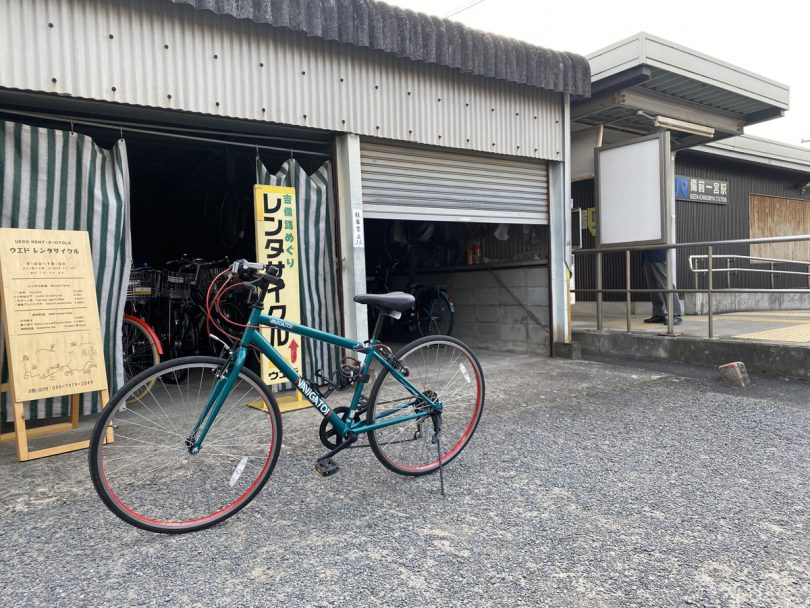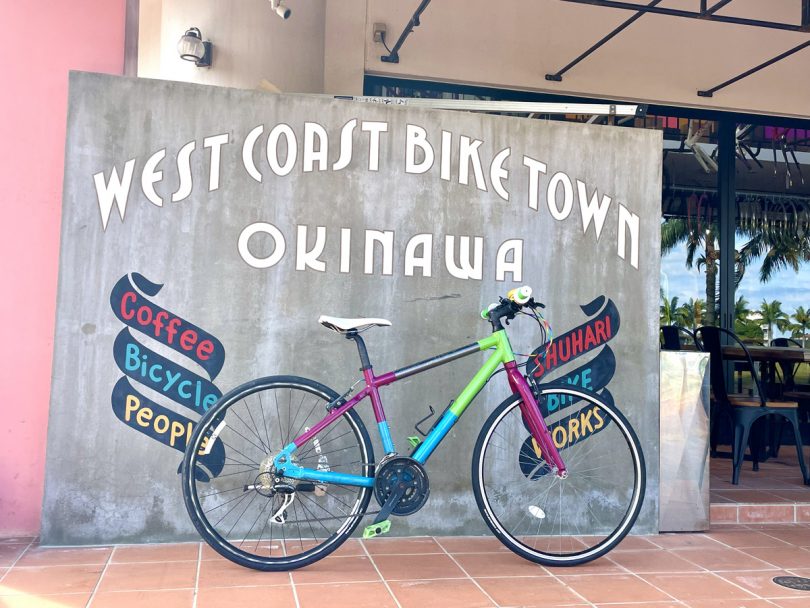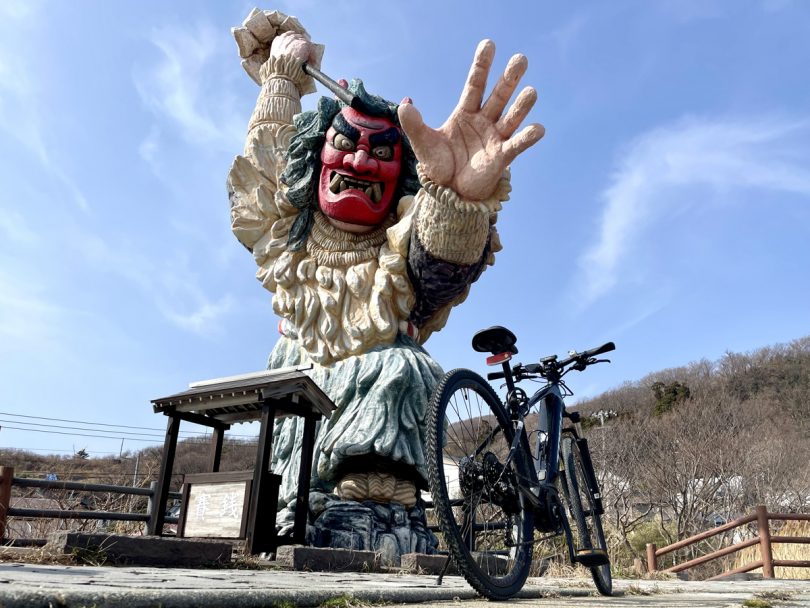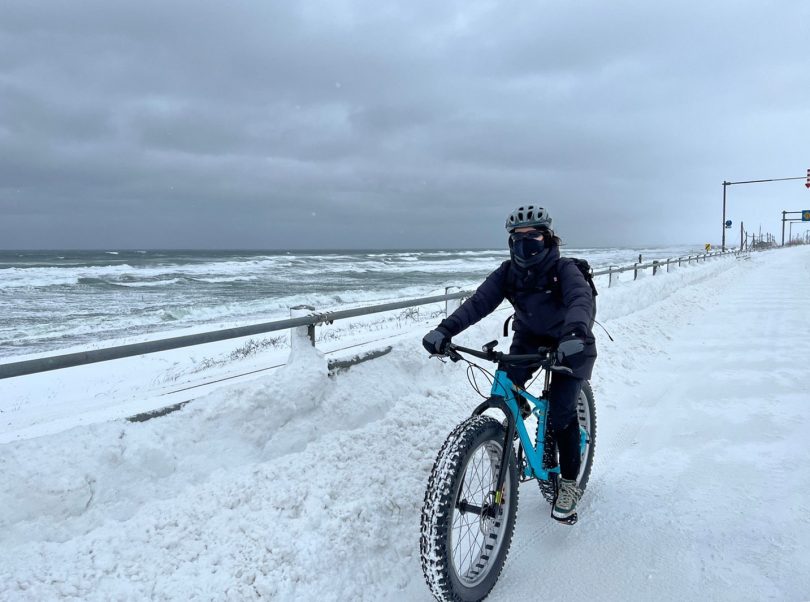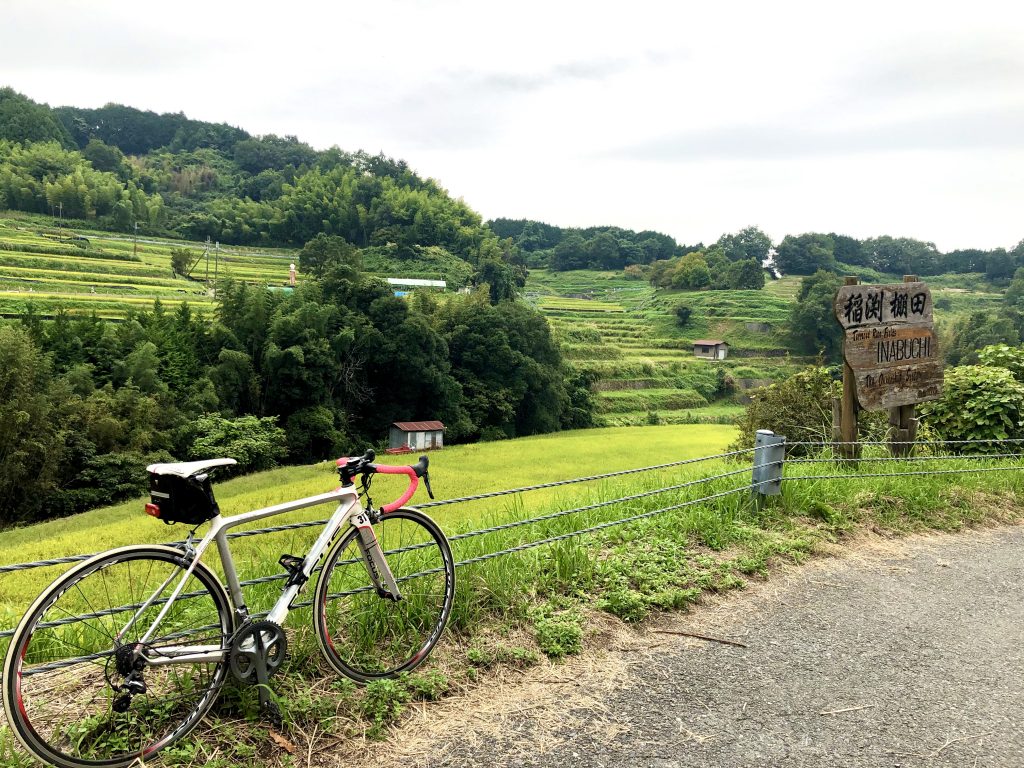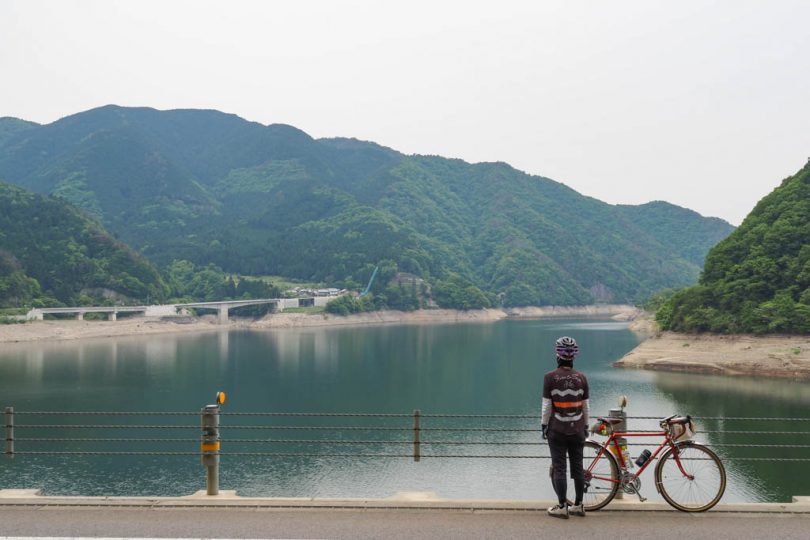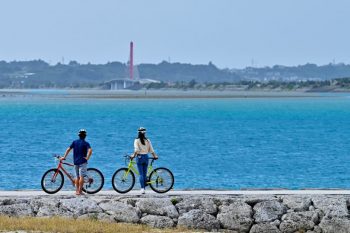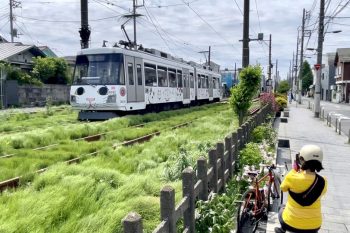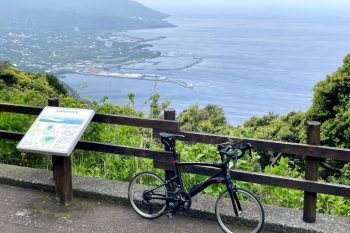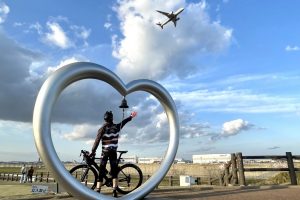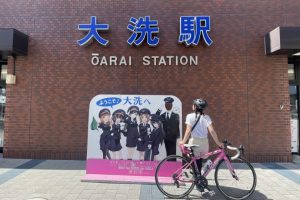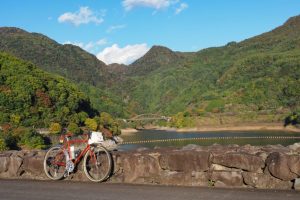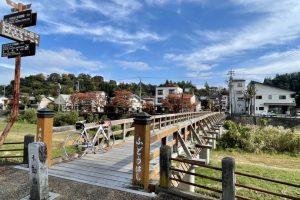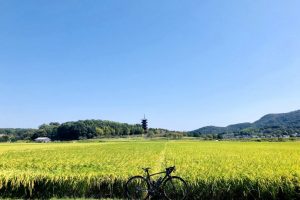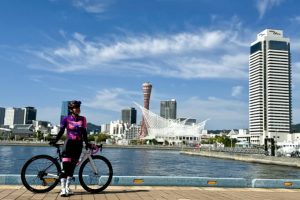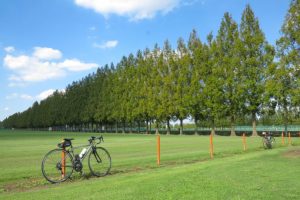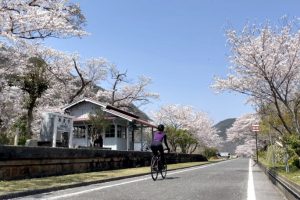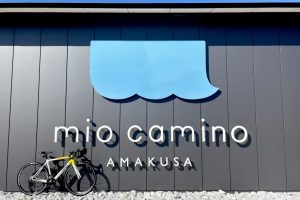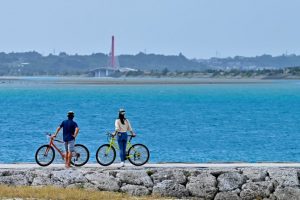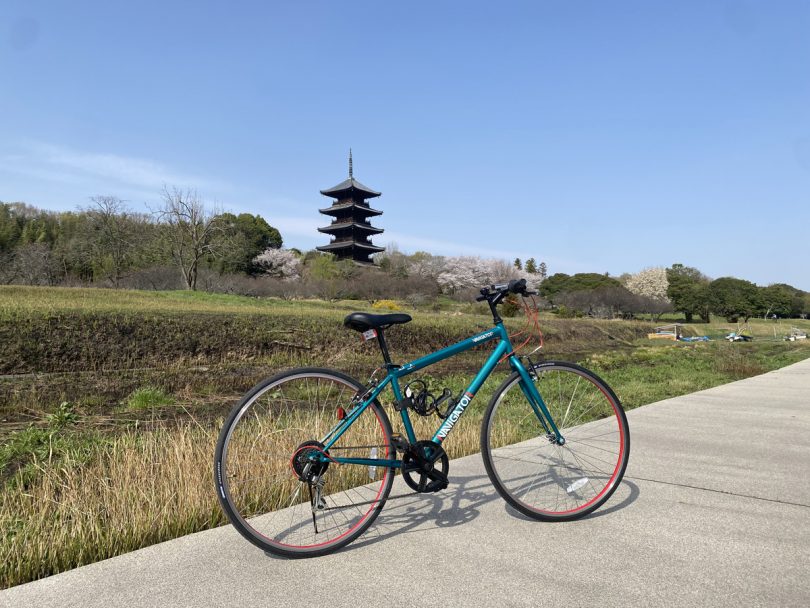
It has been a year since I moved to Okayama Prefecture. Since moving here, I have learned that Okayama Prefecture is a cycling capital of Japan. There are bike rental stores everywhere in town, and safe cycling paths are well maintained. On sunny holidays, families can be seen enjoying cycling together, indicating that cycling is very familiar to the residents of Okayama Prefecture.
There are many cycling routes in Okayama, with 37 routes recommended by Okayama Prefecture, ranging from those for advanced riders with a total length of over 100 km to those that can be easily enjoyed by beginners.
Among them, I chose the “Kibiji Cycling Route” which is short and has few differences in elevation. I enjoyed leisurely pottering in the spring weather along the gently rolling road through the countryside, dotted with historical spots that represent Okayama Prefecture, such as Bicchu Kokubunji Temple and Kibitsu Shrine.
Contents
- Start from in front of JR Soja Station
- Bakery tours in Soja, a town of bread
- A wide variety of fresh local produce! Noumaru Horticulture
- The only five-story pagoda in Okayama Prefecture welcomes you: Bicchu Kokubunji Temple
- Encountering a huge burial mound: Zouzan Kofun Tumulus
- Ancient shrine dedicated to Momotaro: Kibitsu Shrine
- The goal is right in front of you! Kibitsuhiko Shrine
- Course Introduction
- Summary
Start from in front of JR Soja Station
The starting point is JR Soja Station.
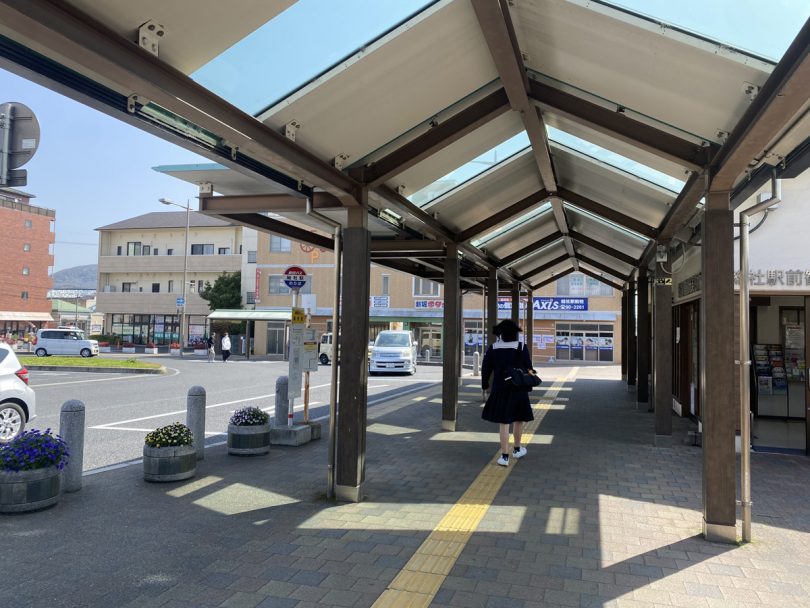
First, rent a bicycle at Araki Rental Cycle in front of the station.
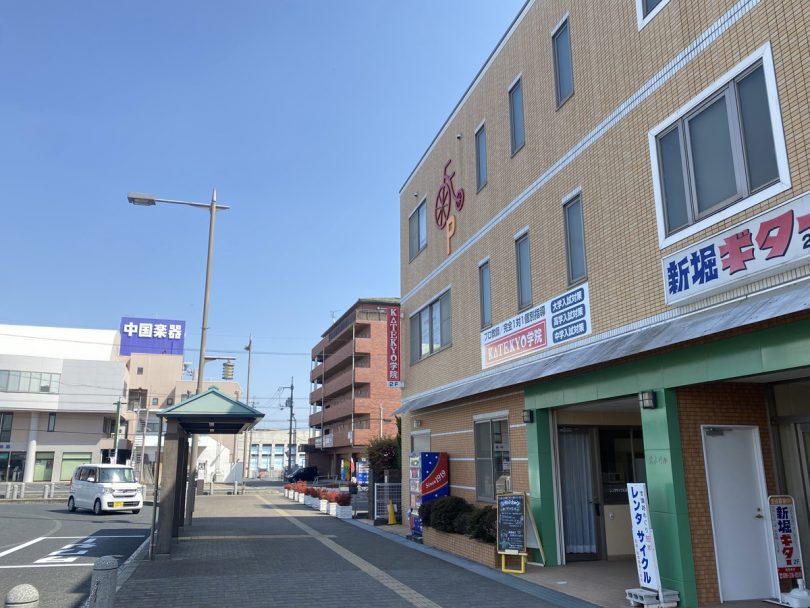
The price range is like this. I was told that I could drop off the bike, so I decided to rent a sports bike for the time being and go to Kamitsuchi Rental Cycle located in front of JR Bizen Ichinomiya Station, the terminal of Kibiji Cycling Route.
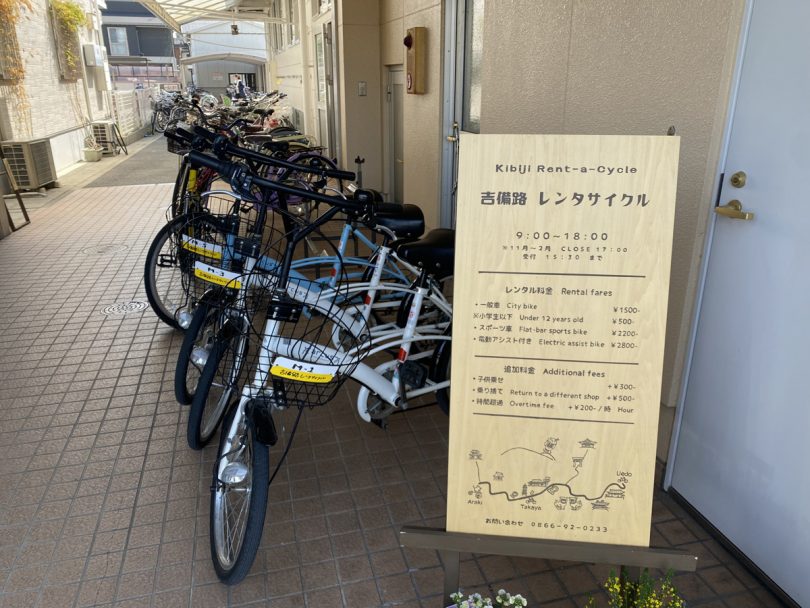
Araki Bicycle Rent provides detailed instructions on how to get around the tourist spots and the route, so even those who do not know the area can enjoy cycling without worries.
Many tourists, including families and foreigners visiting Japan, were renting bicycles.
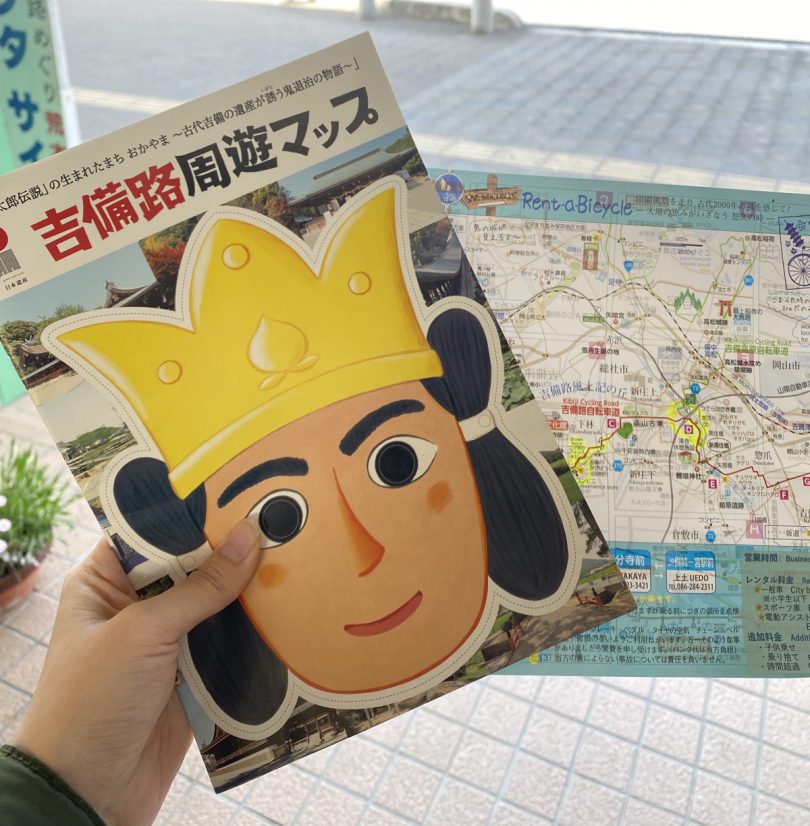
It takes about 17km or 3 to 4 hours to reach the goal, Bizen Ichinomiya Station, with some side trips.
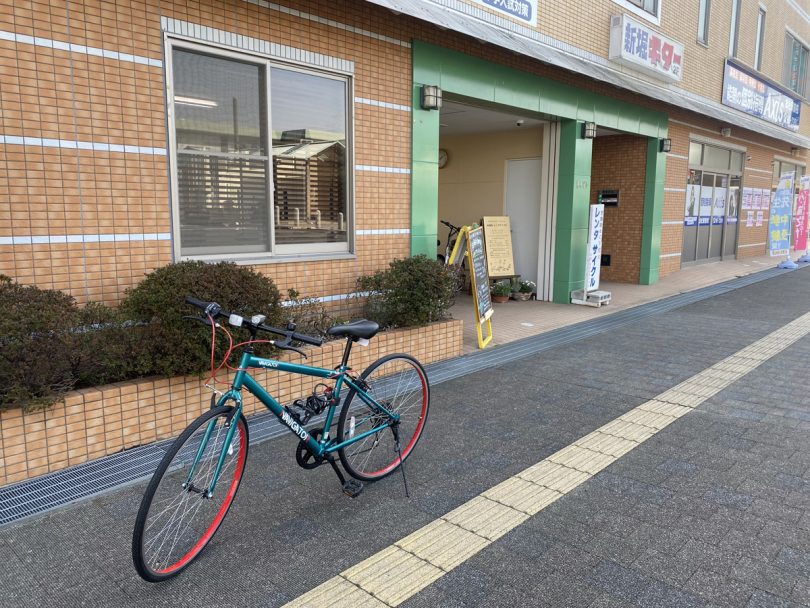
Bakery tours in Soja, a town of bread
As the saying goes, “You can’t fight a war if you’re hungry,” so I first went to Tongu, a long-established bakery established over 80 years ago in front of JR Soja Station.
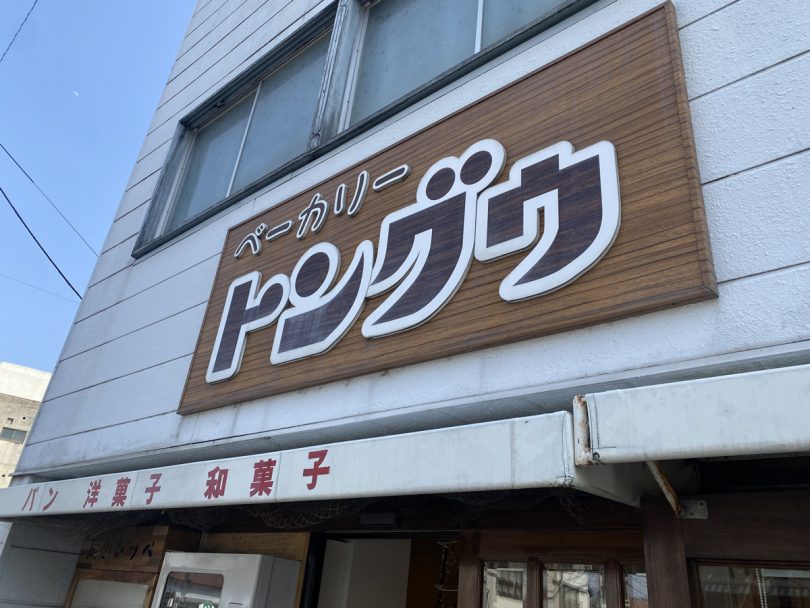
The bakery has been loved by the locals for a long time, and there are many old-fashioned breads lined up in the store.


After agonizing over what to order, I bought Tongu’s specialty, “Oil Bread” for 100 yen, which was recommended by the owner of Araki Bicycle Rent. I thought it was a fried bread, but the package was labeled “Jo-an” (sweet bean paste).
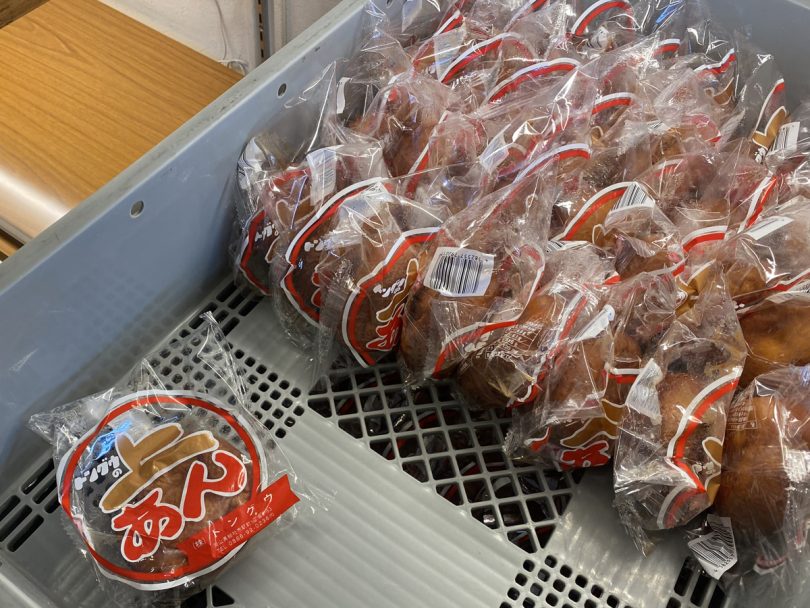
I suppressed my desire to open it and eat it right away, and headed for my next destination.
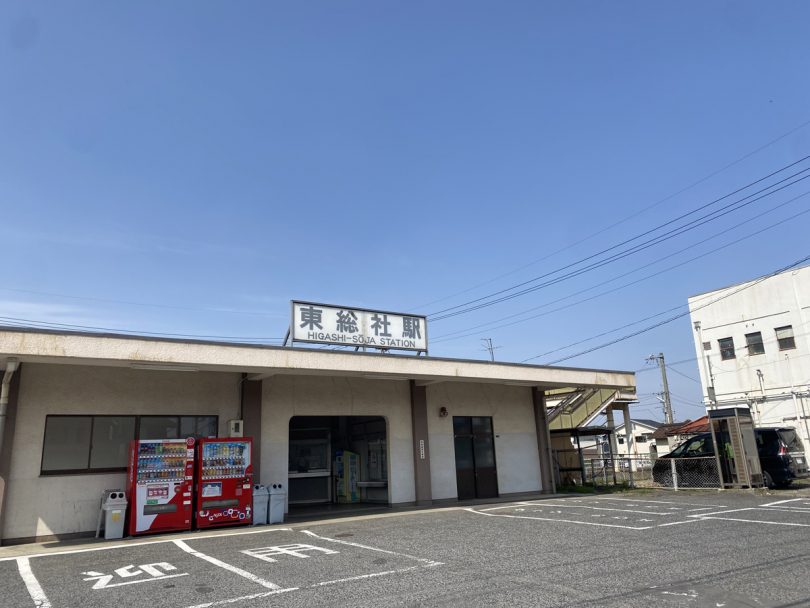
Next stop was the popular bakery “INDUSTRY” located right next to JR Higashi Soja Station. In fact, Soja City is the largest bakery town in Okayama Prefecture, boasting the largest amount of bread manufactured and shipped.
I came here to look for bread for lunch, as the bakery is known for its delicious hard deli breads in particular.
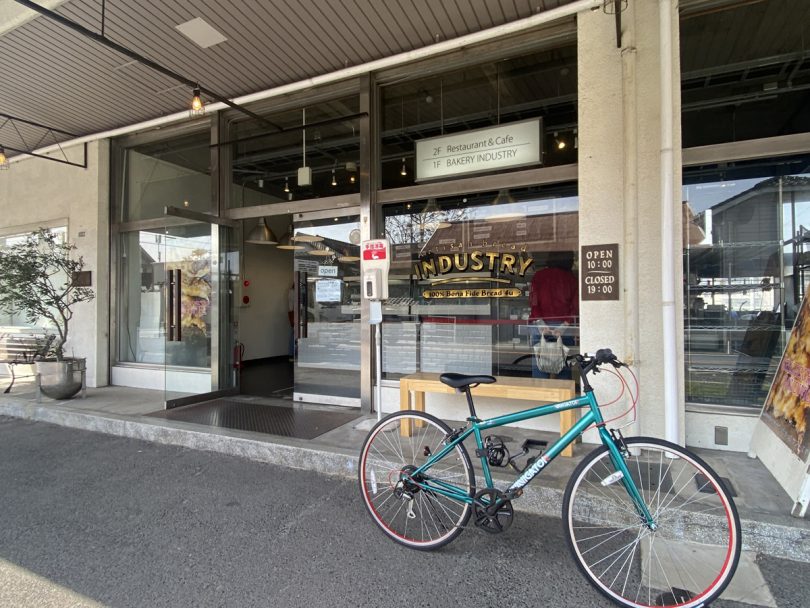
I ordered a hot sandwich in the factory-like atmosphere of the store. The variety of breads is quite limited after noon, so I recommend visiting in the morning if you want to visit.
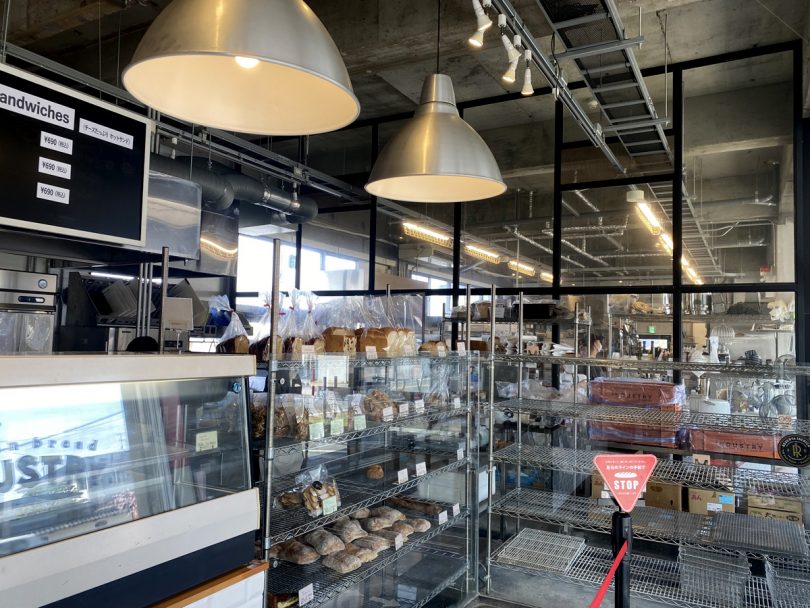
A wide variety of fresh local produce! Noumaru Horticulture
After successfully procuring lunch, it is time to start cycling in earnest. The landmark is a wooden sign that says “Kibi Cycling Route”. If you get lost, look for this sign here and there until you reach the goal, Bizen Ichinomiya Station.
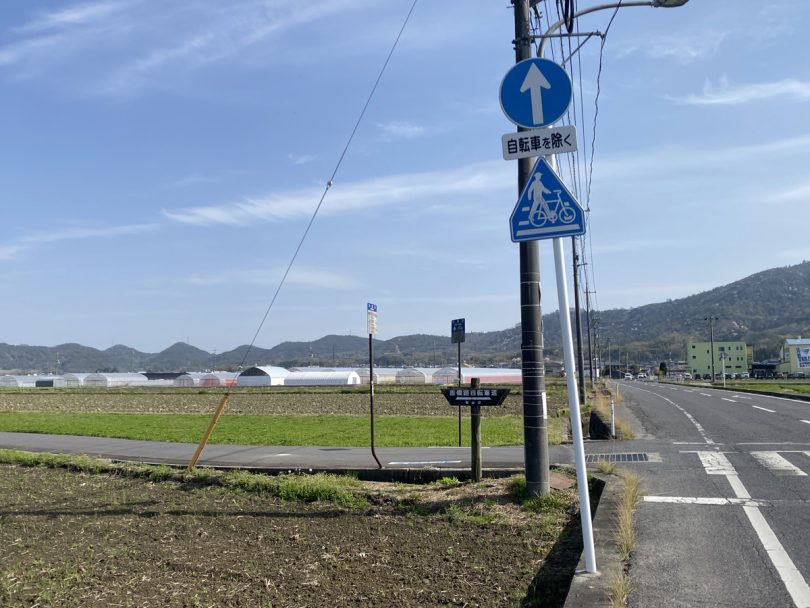
You will pass through a very peaceful countryside and continue east.
It is a perfect cycling day. I saw many people renting bicycles and riding in the same way.
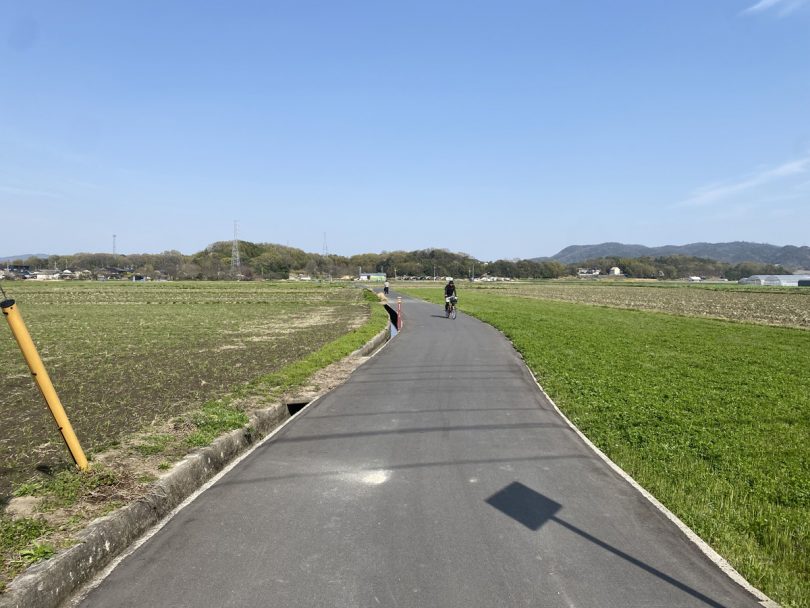
On the way, I stopped at an agricultural produce stand. Noumaru Horticulture is a well-known local produce stand that sells fresh fruits and vegetables at reasonable prices, and is a favorite store that I check regularly.
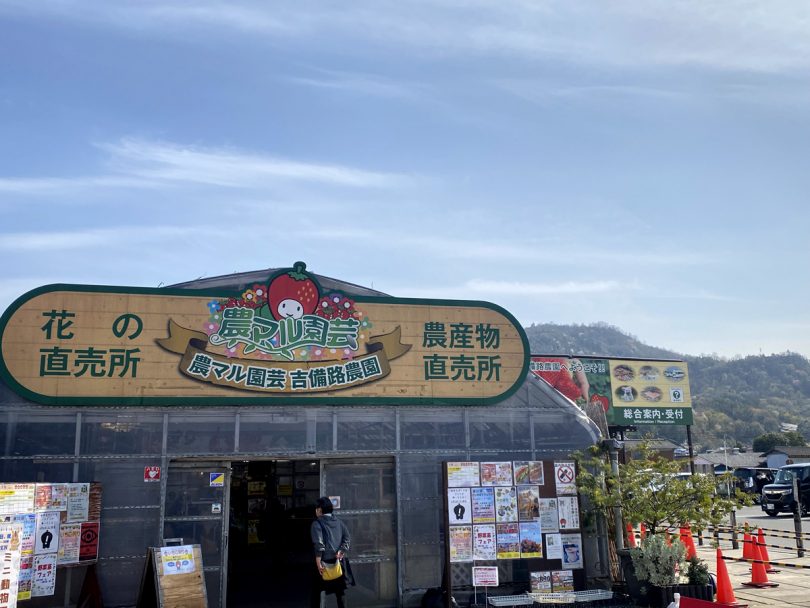
Many strawberries, in the height of their season, were on sale. There are many other direct sales stands for agricultural products along Kibiji Cycling Route, so if you are interested in local foods, you may want to stop by.
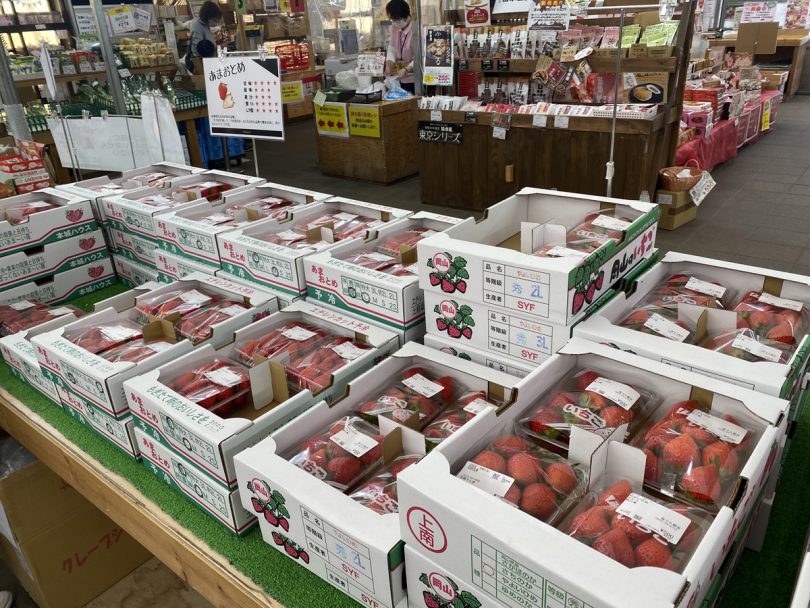
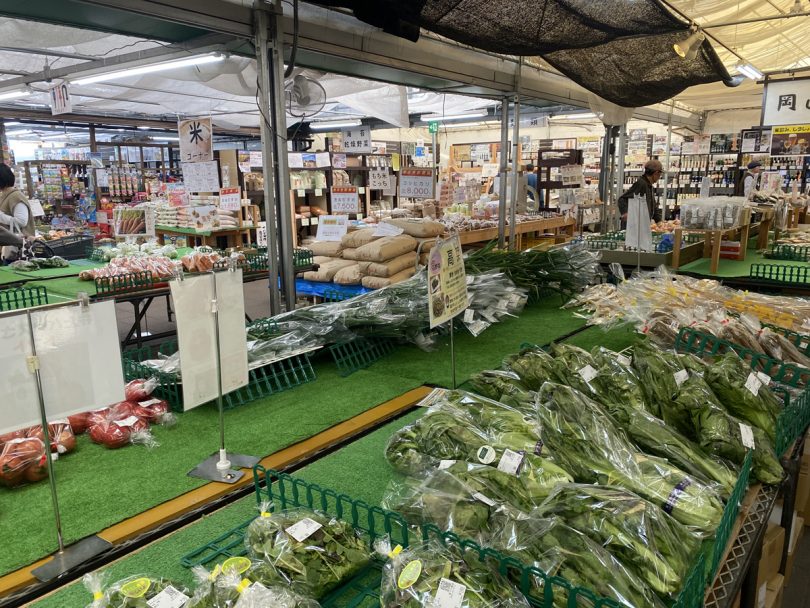
The only five-story pagoda in Okayama Prefecture welcomes you: Bicchu Kokubunji Temple
Without further detours, I will return to Kibiji Cycling Route. The first historical spot I will visit is “Bicchu Kokubunji Temple,” one of the biggest highlights of Kibiji Cycling Route and a great photo spot.
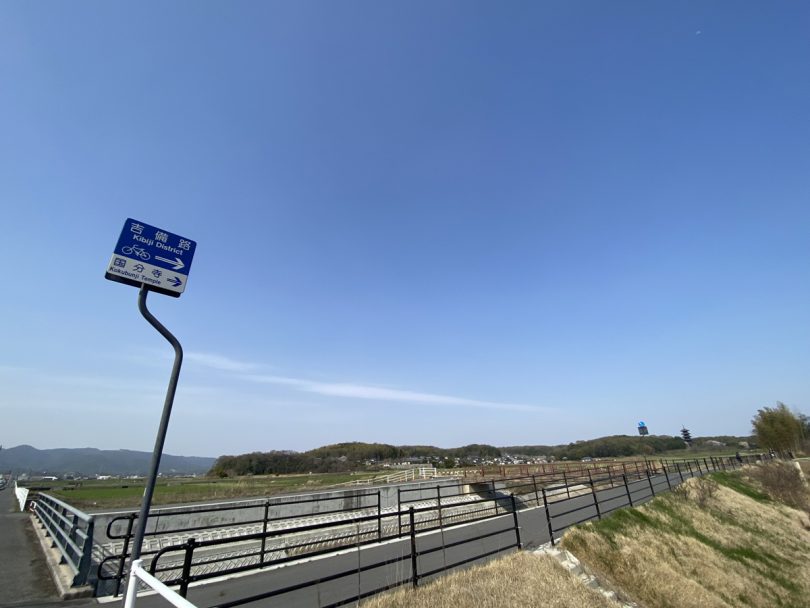
Bicchu Kokubunji Temple is one of the Kokubunji Temples built by Emperor Shomu in the Nara period (710-794) and is designated as an important cultural property. I continued riding through the rice paddies for a while, looking at the five-story pagoda in the distance.
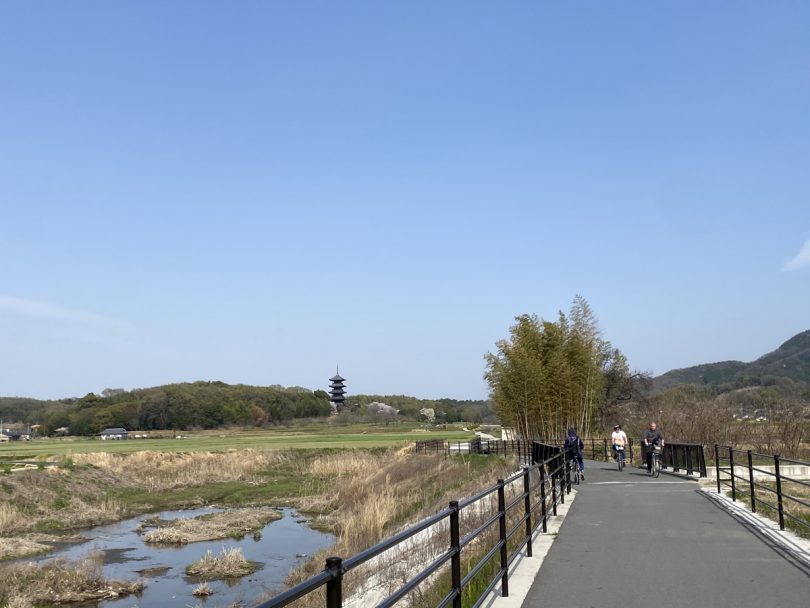
The view of five-story pagoda is getting bigger and bigger. This is a bicycle-only road, so you can take your time and enjoy taking pictures without worrying about cars.
In this area, which is one of the best cycling spots in Okayama, you can enjoy cycling while admiring the flowers of the four seasons: rape blossoms and lotus flowers in spring, sunflowers in summer, and cosmos in autumn.
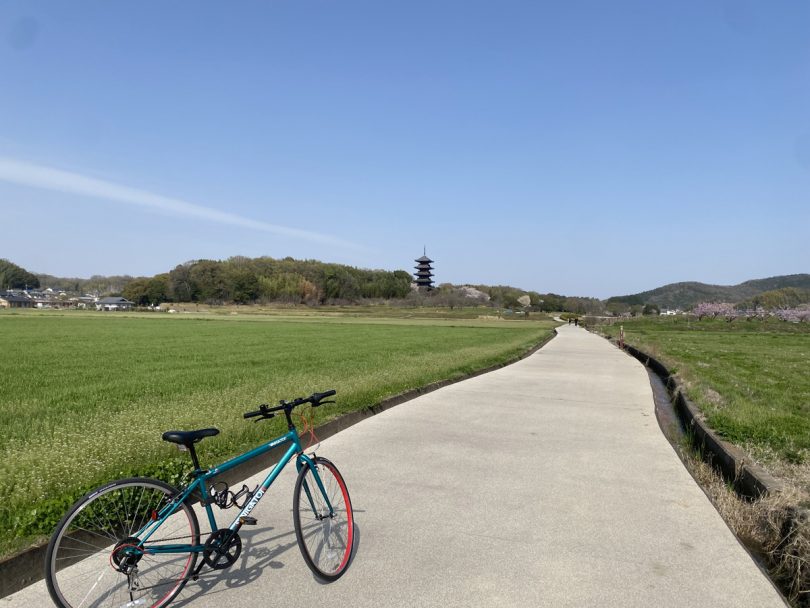
In the meantime, I arrived at Kokubunji in no time. The cherry blossoms were just in full bloom, so I decided to have lunch under the cherry trees.
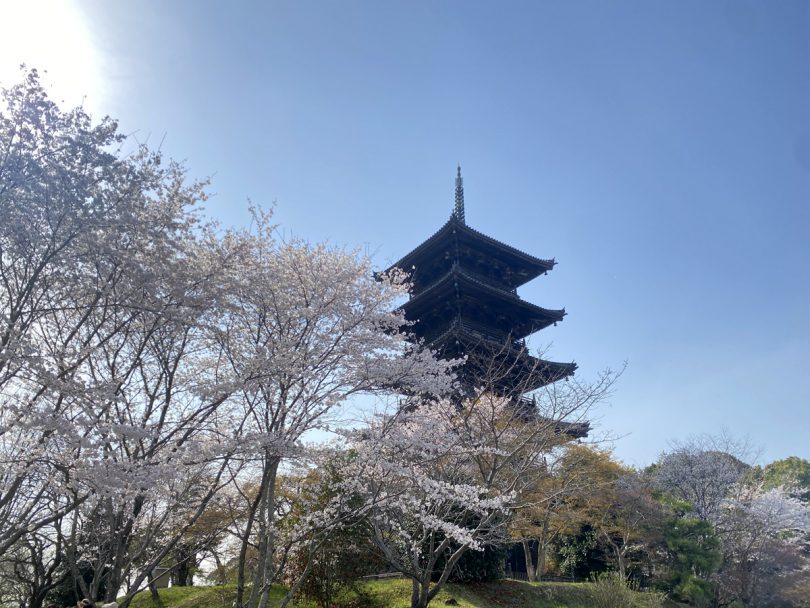
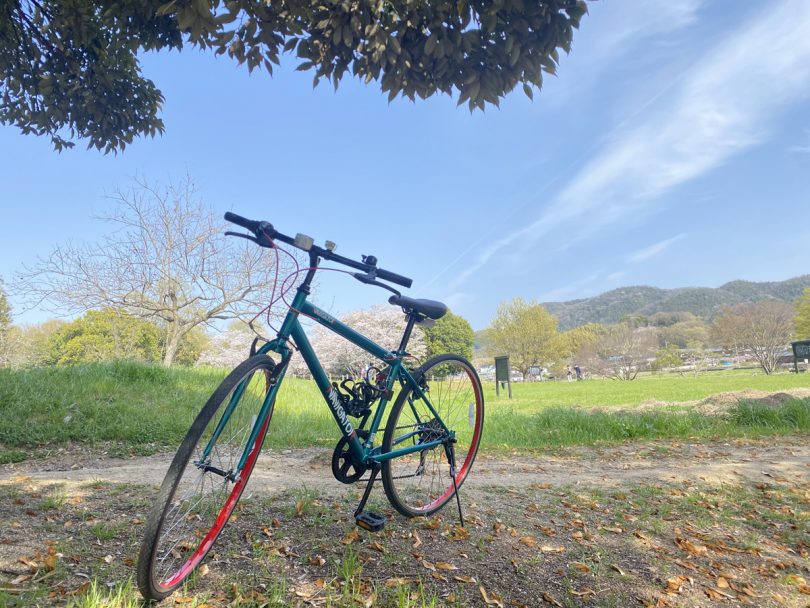
I decided to have lunch under the cherry blossoms, enjoying the original Japanese scenery. What a happy moment!
The hot sandwiches I bought at “INDUSTRY” and the sweet oily bread I bought at “Tongu” were so good for my tired body.
This is the halfway point of Kibiji Cycling Route, so I am now ready to start the second half of the trip with a little more energy.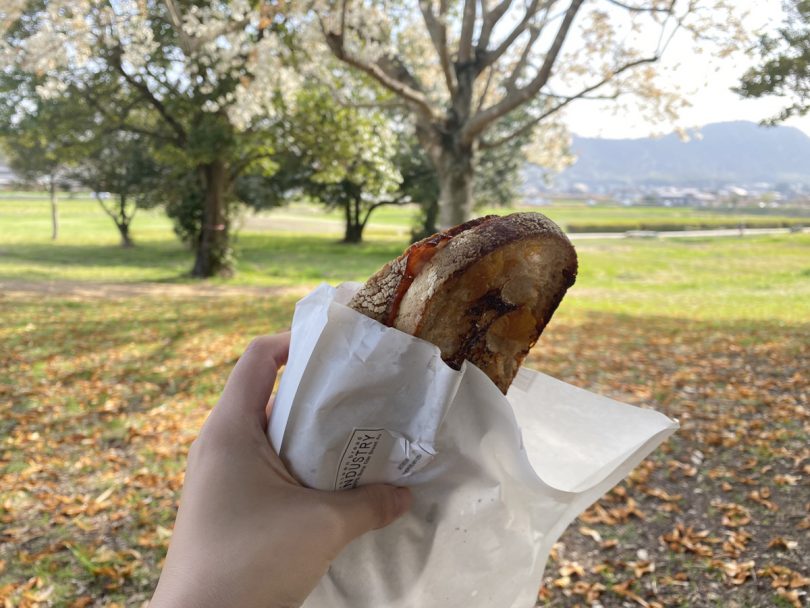
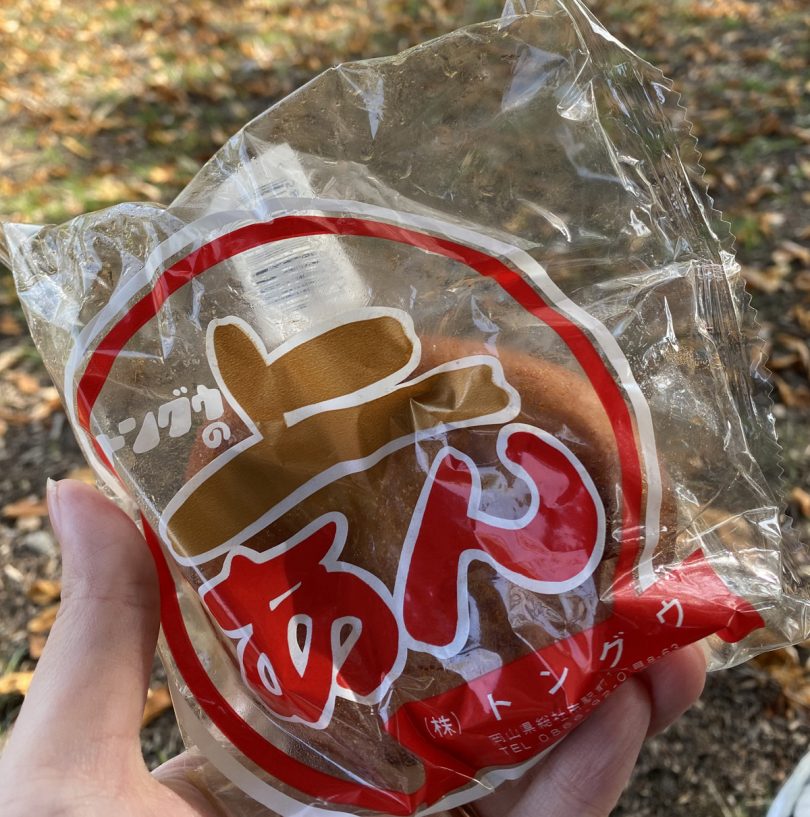
I moved forward at a brisk pace, looking at the pretty cherry blossoms on the side.
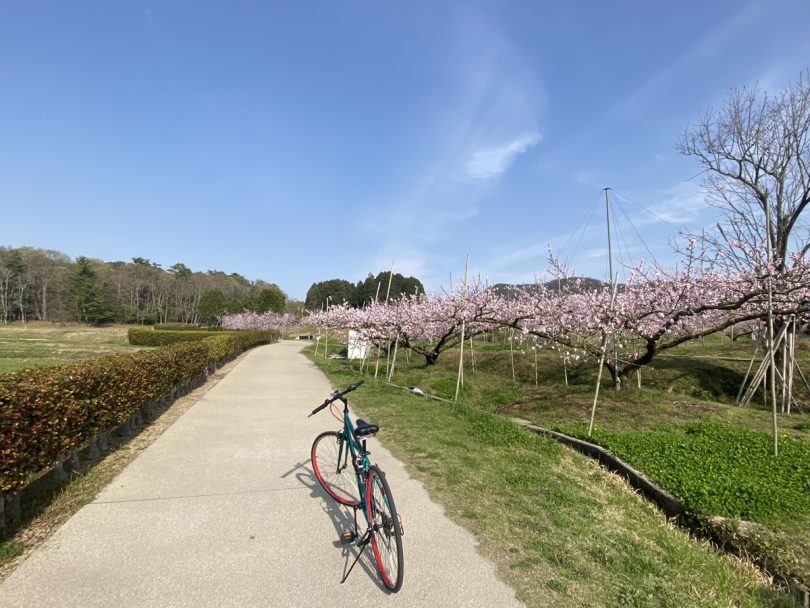
Encountering a huge burial mound: Zouzan Kofun Tumulus
About 2.5km from “Bicchu Kokubunji Temple,” I came upon the “Zouzan Kofun,” a huge burial mound that is the fourth largest in Japan. Zouzan Kofun is said to be the tomb of the king who ruled Kibi (Okayama) in the first half of the 5th century, and the surrounding area is dotted with small and medium-sized tombs believed to be those of the king’s close vassals. The area is dotted with small and medium sized tombs of the king’s close advisors.
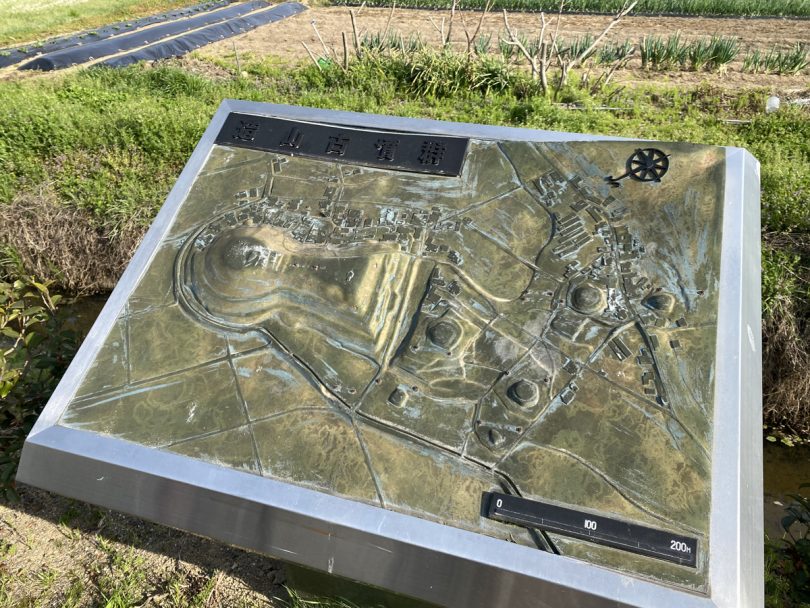
Passing under the expressway, I keep pedalling along the river.
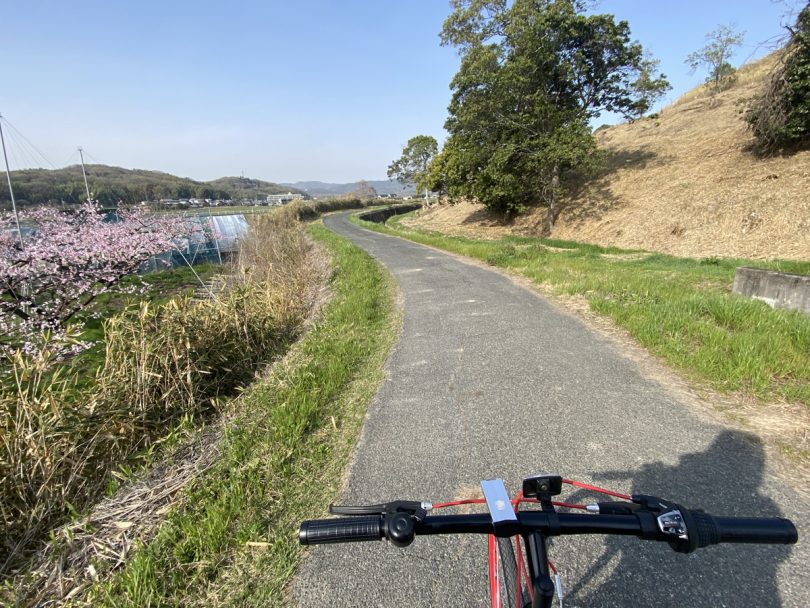
The road goes under the highway and runs along the river.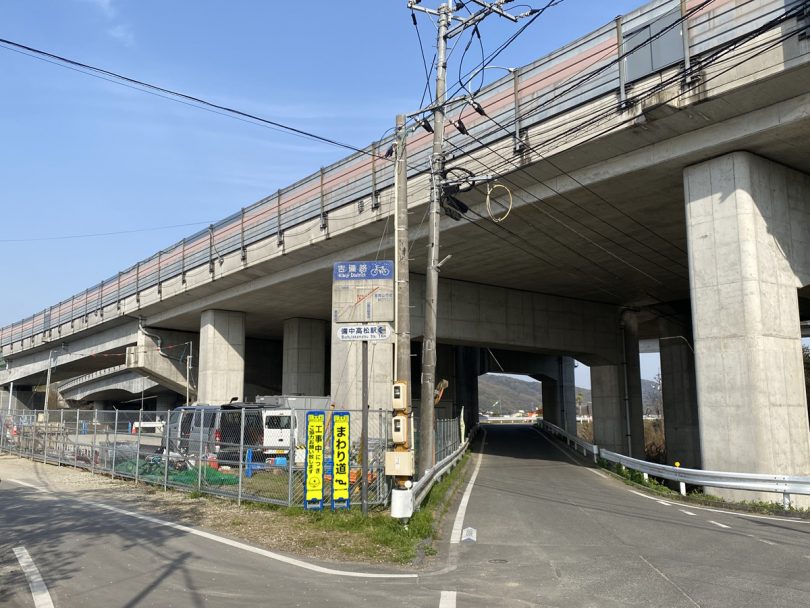
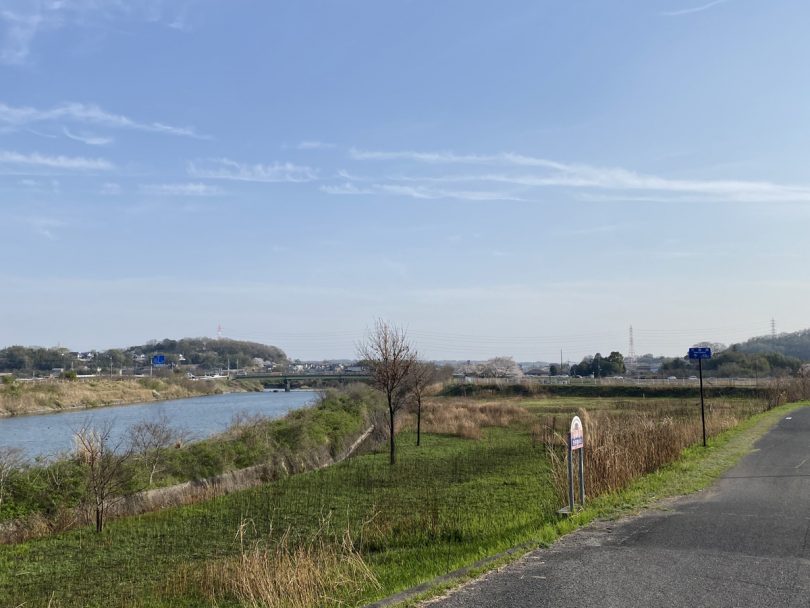
While cycling along the river, I found something called the “Kibiji Cycling Route Tsudera Rest Facility”. I took a short rest while looking at the cherry blossoms in full bloom. With only an hour or so left before the return time of our rental bikes, I looked at the map and planned our next plan.
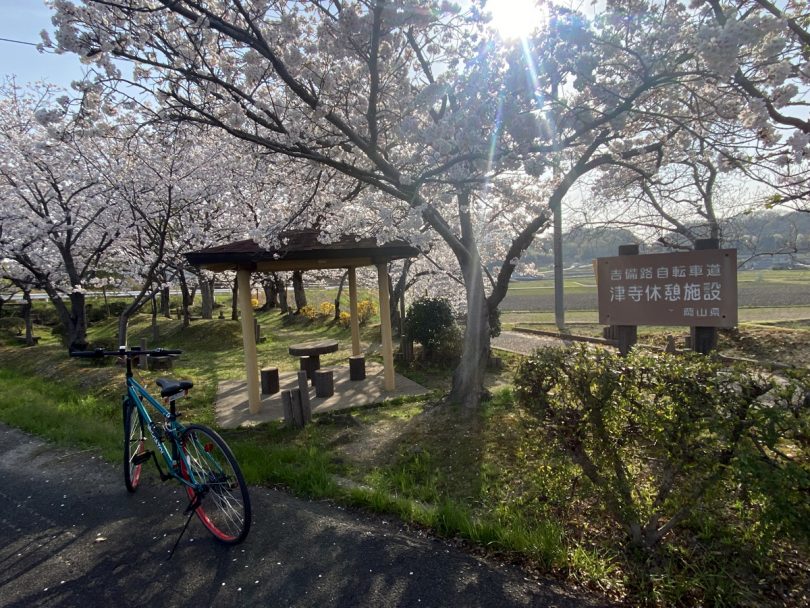
After this, I decided to head to Kibitsu Shrine, which enshrines Kibitsuhiko-no-mikoto, the model of the Momotaro legend. There is nothing like the exhilarating feeling of running through rice paddies.
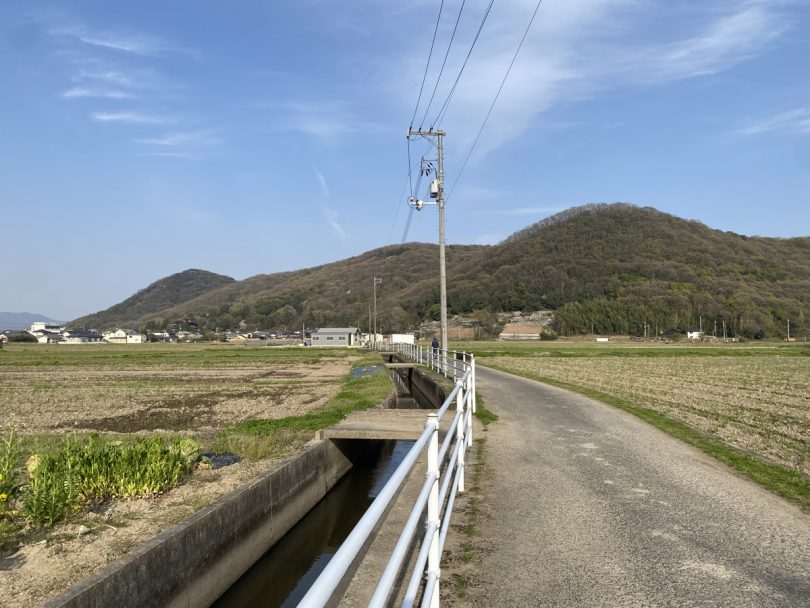
Ancient shrine dedicated to Momotaro: Kibitsu Shrine
Arrive at Kibitsu Shrine.
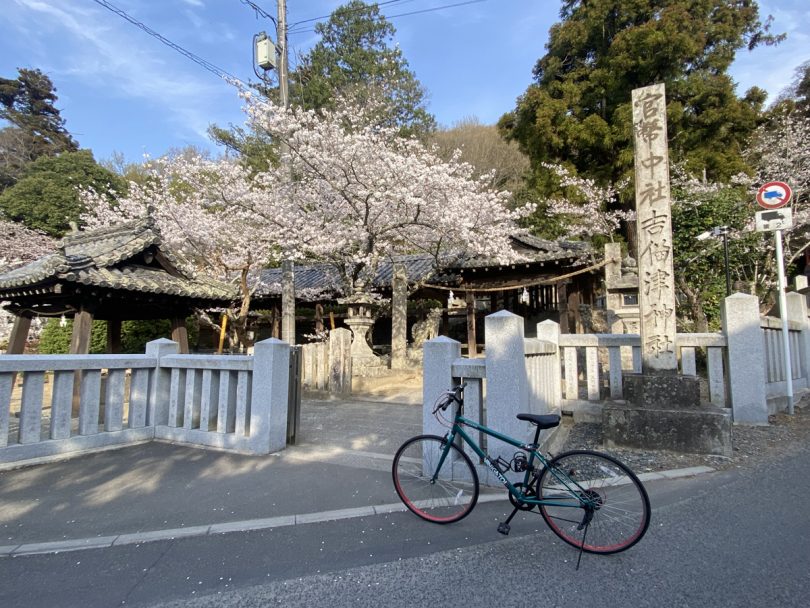
First, I visit the beautiful main shrine, which is one of the largest in Japan. This architectural style of the Hiyoku Irimoya-zukuri style is also called “Kibitsu-zukuri,” and is designated as a national treasure.

There is also Momotaro-themed omikuji (fortune) in the precincts of the shrine!
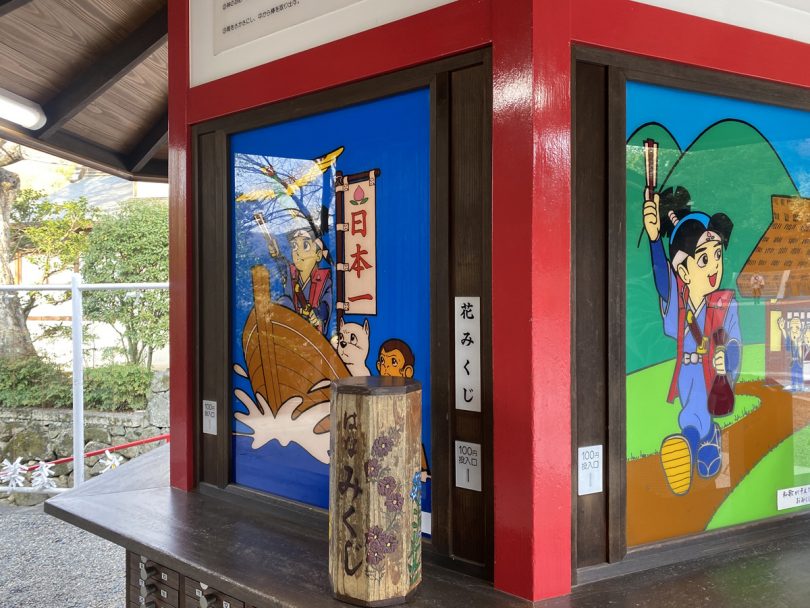
On the south side of the main hall, there is a corridor that continues for about 360m, where visitors can admire seasonal flowers such as plum, camellia, cherry, peony, azalea, satsuki, and hydrangea.
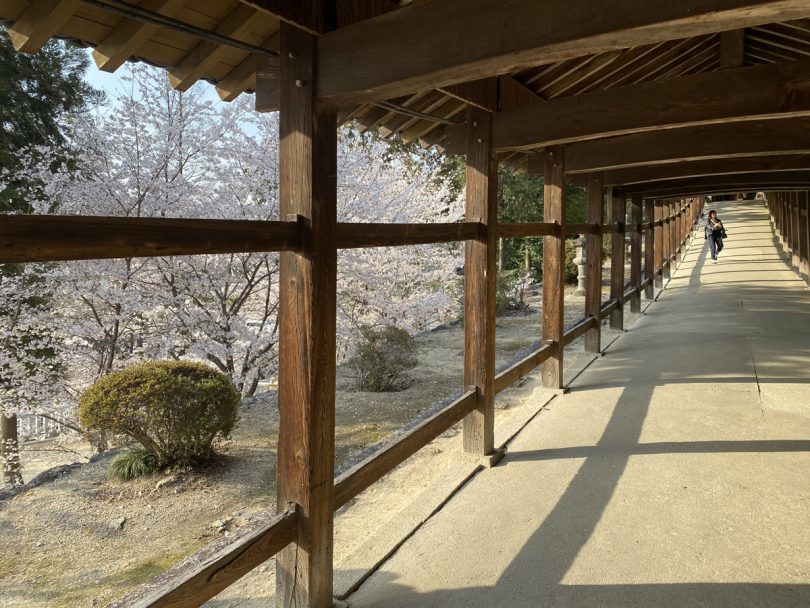
After fully enjoying the cherry blossoms, I will hurry on our way to our final destination, “Kibitsuhiko Shrine”.
It is about 2km from Kibitsu Shrine to Kibitsuhiko Shrine, and I found this cute manhole along the way.

The goal is right in front of you! Kibitsuhiko Shrine
In the parking lot of Kibitsuhiko Shrine, there were many carp streamers, probably because the Boys’ Festival (May 5th) is around the corner.
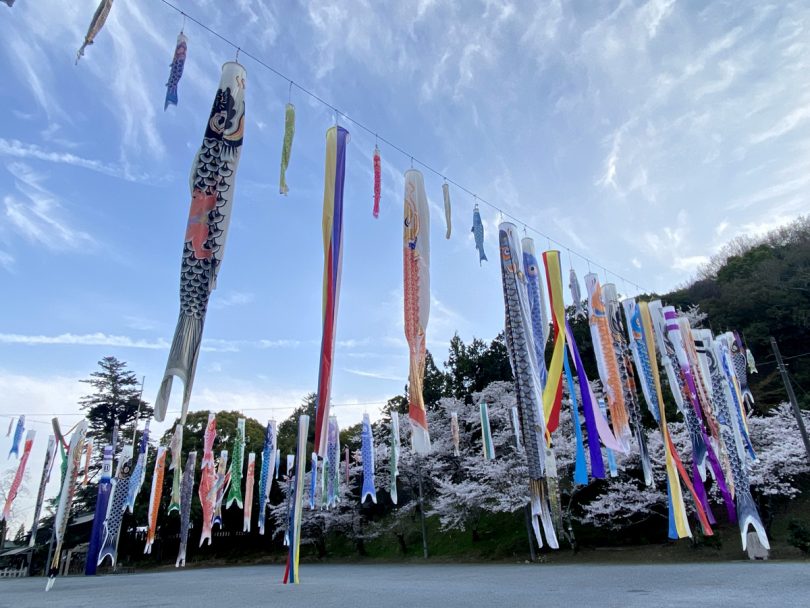
Kibitsuhiko Shrine is also a shrine associated with Momotaro. Also known as “Bizen Ichinomiya,” the shrine has long been popular as the chief deity of the Bizen Province.
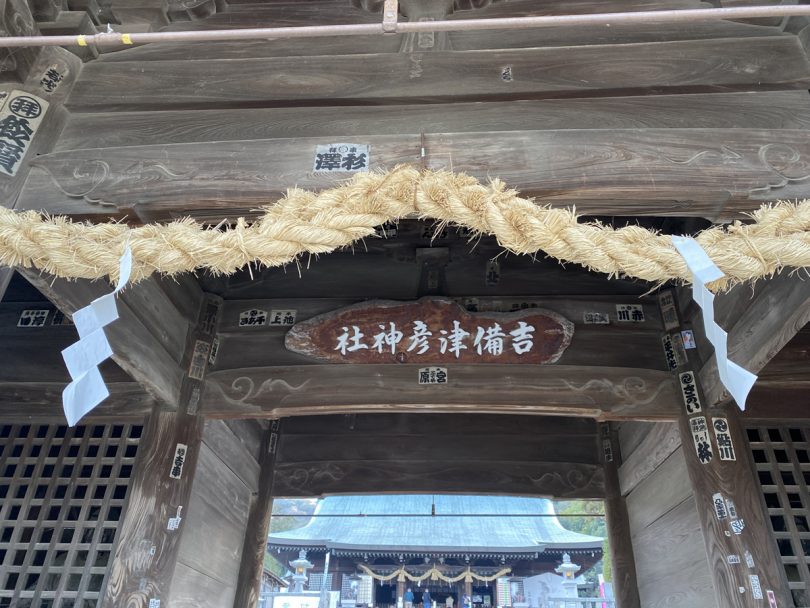
On the summer solstice, the sun rises directly in front of the main torii gate and shines into the temple, giving it the name of “Shrine of the Morning Sun.”
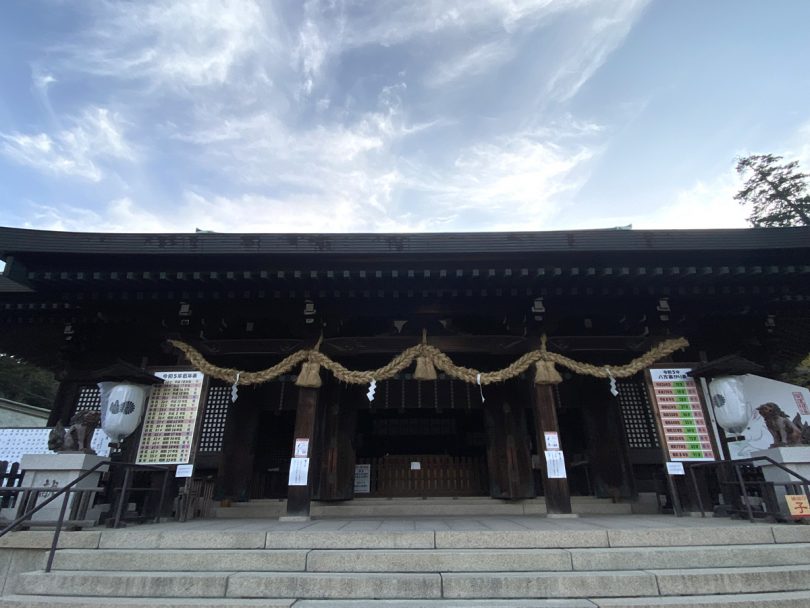
Leaving “Kibitsuhiko Shrine,” I headed for JR Bizen Ichinomiya Station, our final destination.
After returning the bicycles at the Kamitsuchi bicycle rental shop in front of the station, the 17-km cycling tour from JR Soja Station comes to an end.
Course Introduction
Summary
Kibiji Cycling Route was a very easy cycling route with few bumps and no elevation differences. Various historical spots were scattered in the countryside, and seasonal flowers were colorfully decorated, so I could enjoy cycling to the end of the tour.
Kibiji cycling tour is perfect for the coming season. Why not go out to see the spectacular scenery of Okayama while taking care to protect yourself from the sun and stay hydrated?
